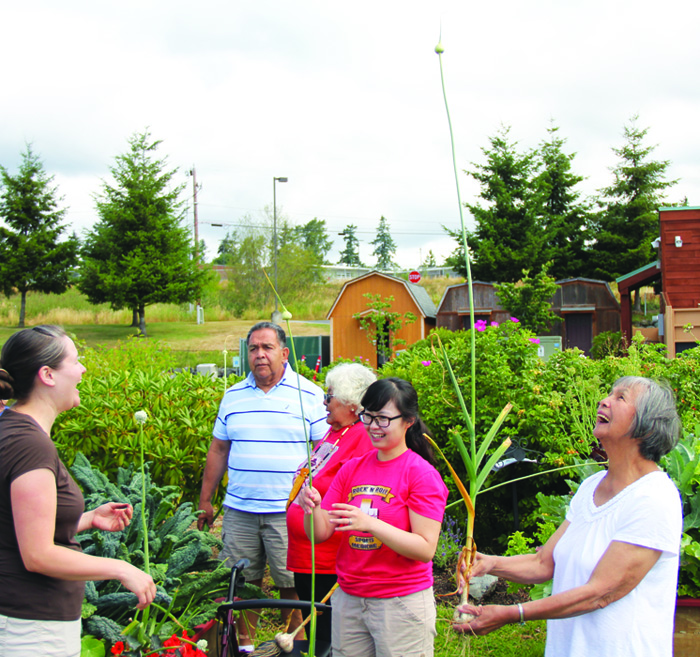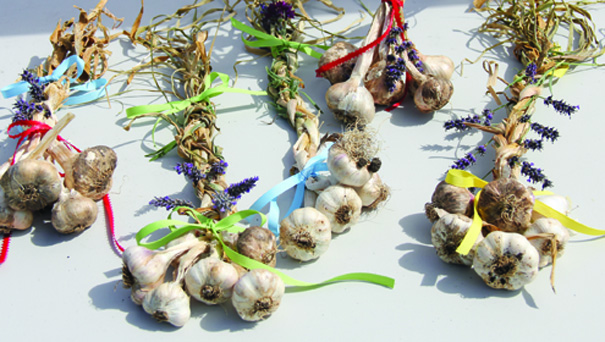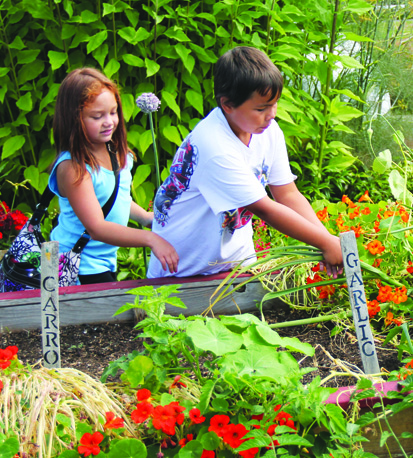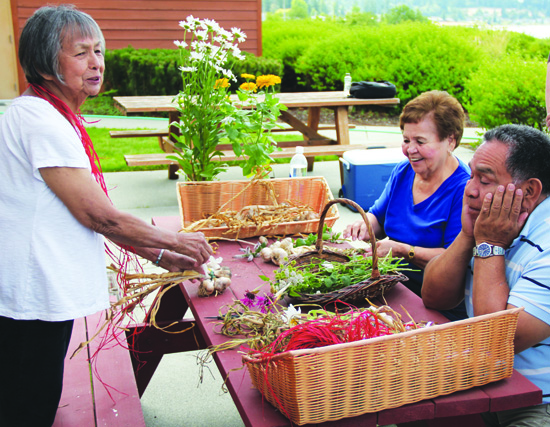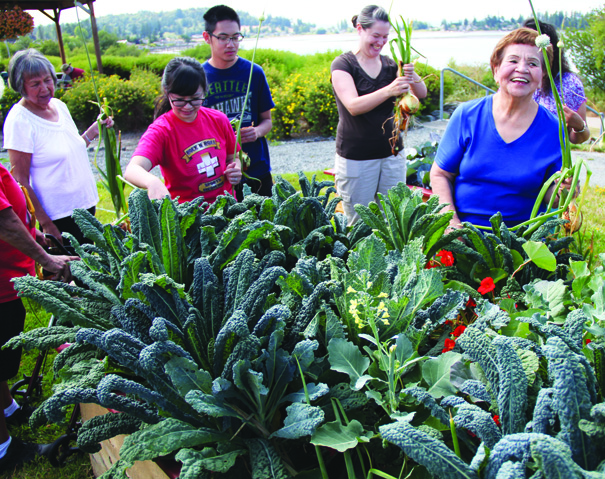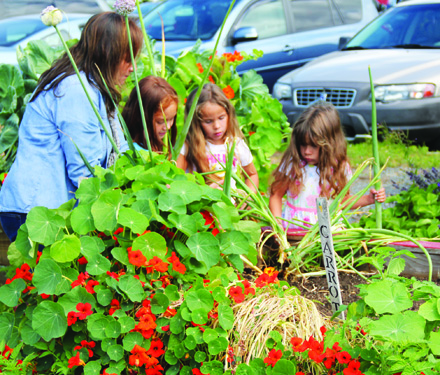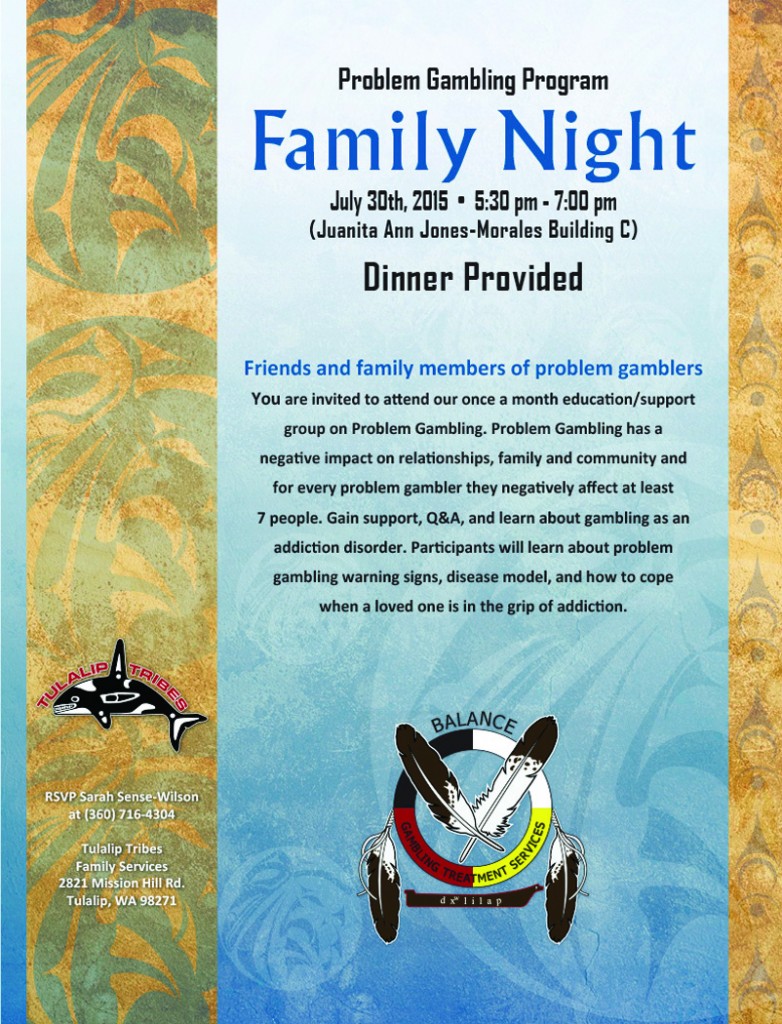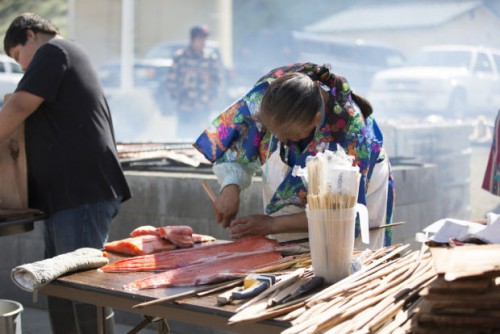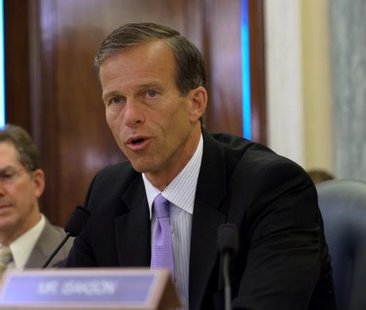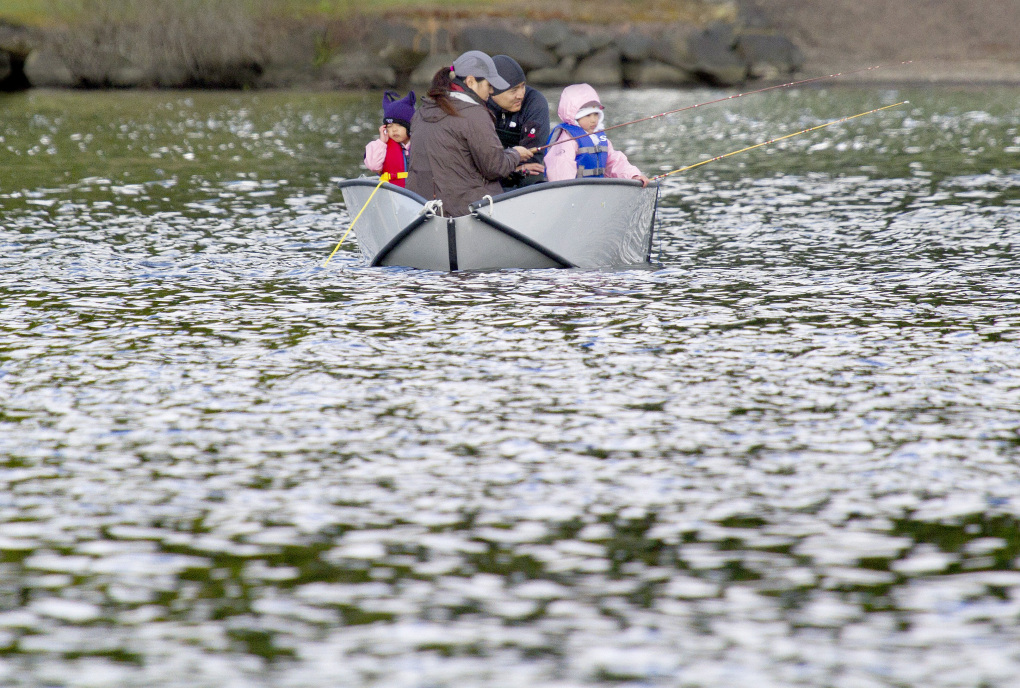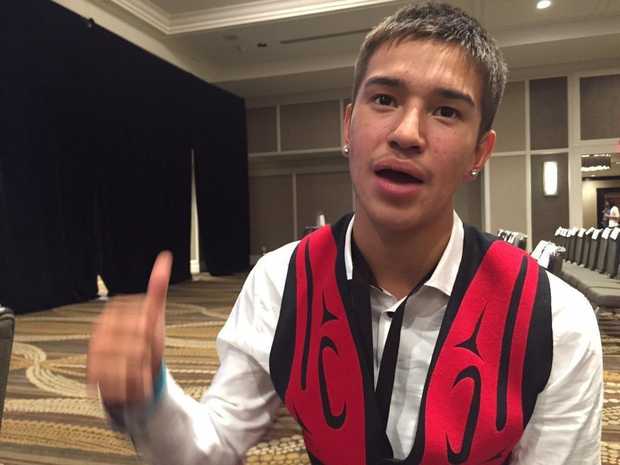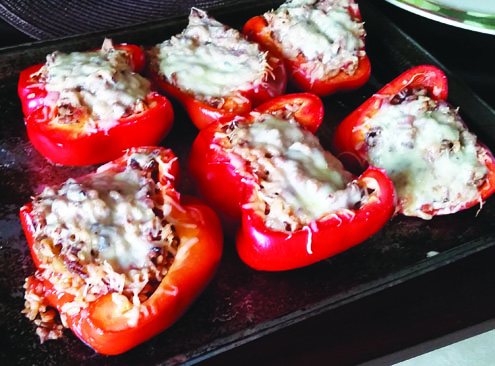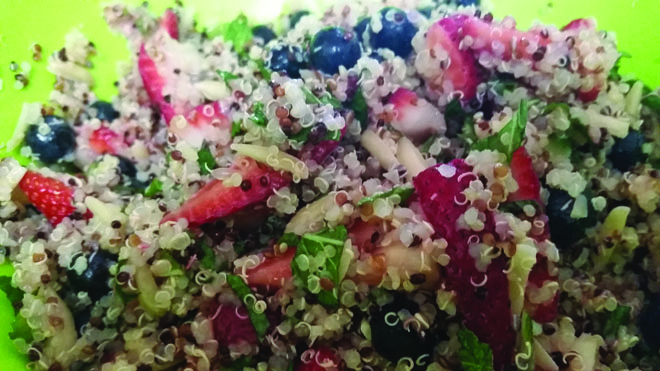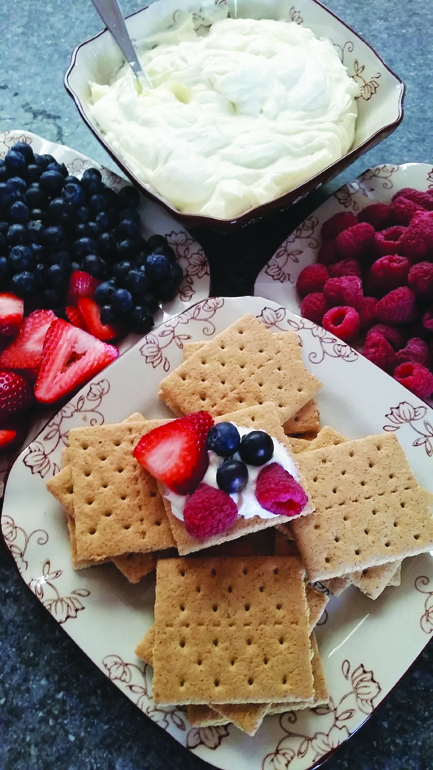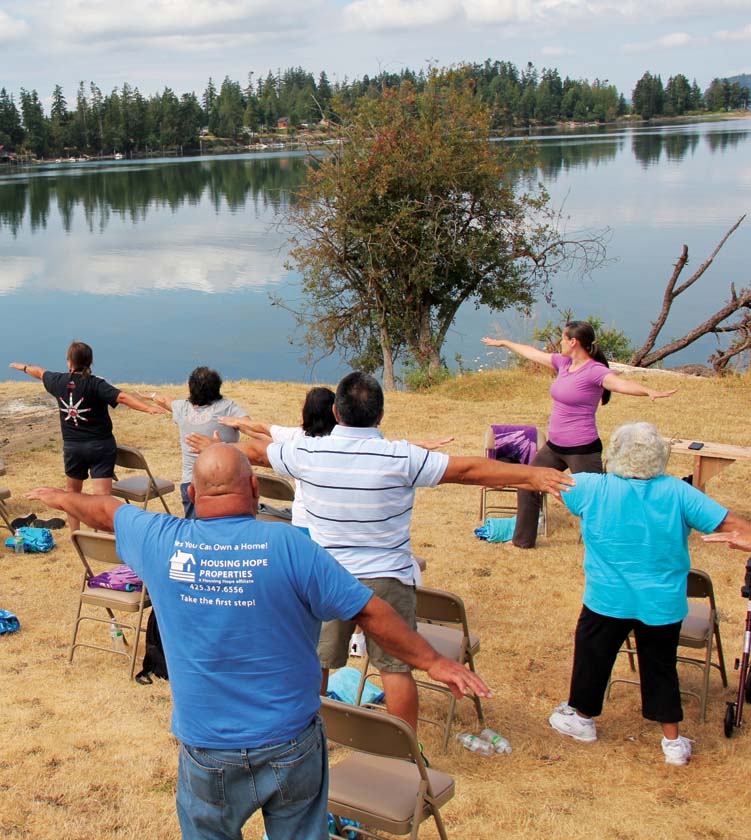
By Micheal Rios, Tulalip News
It’s a gorgeous, warm summer morning on Thursday, July 23. The Tulalip Wisdom Warriors are sitting only mere feet away from the calm, chilled waters of Tulalip Bay. They marvel at the magnificent world in front of them; the gentle rays of sunshine, the beautiful sky, the flagrant ocean breeze that blows ever so softly against their skin, the soft crunch of dried grass beneath their shoes. It’s the perfect day and relaxing setting for them to experience the happiness, confidence, and mental sharpness that are direct results of practicing Anusara chair yoga.
“What I’d like to encourage today is people really listening to their body, to know what your body’s capabilities are,” explains second year UW medical student and Karen I Fryberg Tulalip Health Clinic volunteer Autumn Walker. “You know what injuries you have and what limitations you have with your body, so when we are doing today’s yoga class I want you to use that inner mind to listen to your body and say ‘I know I can only go this far with this pose because of my limited ability with my spine’ or ‘I’ve already had an injury with this leg so I’m going to go easy on this side.’ If you have any questions at all let me know.”
And so the class begins.
It is the monthly Wisdom Warrior Provider Class and for this class, an open invitation was sent out to anyone who would like to attend and share in this new experience of learning Anusara chair yoga. For the Wisdom Warriors, the monthly provider class has become a tradition of gaining new experiences that bring them together every month, to chit-chat, catch up on current events, and gets them outside, off the couch and away from the TV.
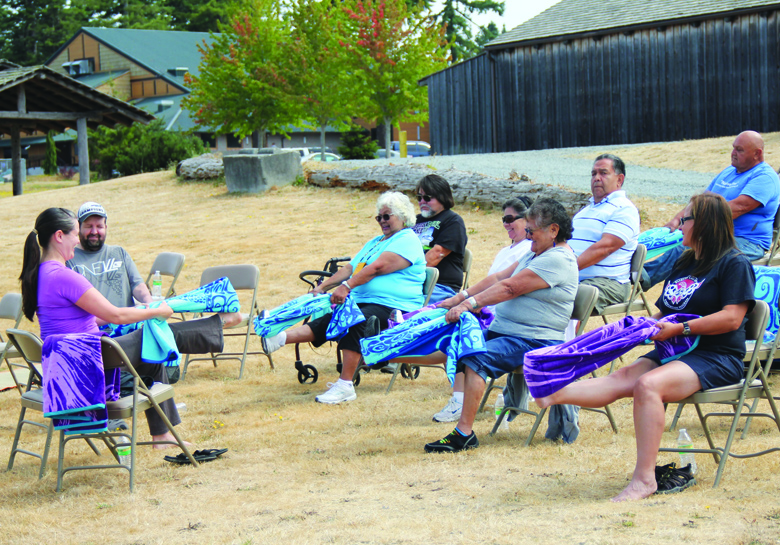
Taking full advantage of the picturesque summer day, Walker and Veronica Leahy, the Tulalip health clinic Diabetes Care and Prevention Program Manager, decided to have their monthly provider class just below the Kenny Moses building, on the edge of Tulalip Bay. They came up with the idea of teaching the Wisdom Warriors chair yoga as a means of creating accessible paths to wellness for those who could not benefit from traditional physical activities due to age and/or limiting physical conditions.
“Roni and I were talking about how the community has been encouraging a lot of the members of the Diabetes Prevention Program, the Wisdom Warriors, to do walking as exercise,” said Walker. “When you walk without using other wellness strategies sometimes that can lead to injury. For example, if you’re walking without stretching or not being mindful of your body then that can lead to injury. Since we want our Wisdom Warriors to be able to use their bodies for a long time and walking pain-free, we wanted to setup some programming for them that would support that health and wellness.
“I’m familiar with yoga. I’ve been practicing yoga for almost ten years, and it’s helped me a lot with the pain I’ve been having, keeping my muscles healthy and strengthened, and it also provides me with awareness of my body as I’m using it. So when I’m exercising in ways that’s not yoga, I know better how to take care of myself. I was hoping to share that with the individuals today; to teach them a little bit about how to be mindful about what their body needs and wants, to respect the injuries that they have, to accept themselves for that without judgement, and to practice a little bit of stretching.”
It is no secret that America (and most of the world for that matter) is faced with a health crisis. The U.S. Surgeon General states that “25 percent of all adults, approximately 50 million, are not active at all through some form of exercise or physical activity.” If you number yourself in this sedentary group or your physical fitness activity is limited because of various physical conditions, then you belong to a large population underserved by innovative means of exercise, like chair yoga exercise programs.
“Props like a chair and towel are used as support as we gain more of an awareness of our body while recognizing and accepting limitations. For example, if you don’t have that hip flexibility that you once had, then you can use a chair to get into a better position for your own body’s needs. You can custom use the props depending on your body’s needs, so the practice becomes individualized, where you’re not saying everyone has to be a certain way,” continued Walker. “Some of the people who came today have varying limitations. One person has had hip surgery, so she needed a different modification so she could adapt the practice to what’s best for her and what her body needs, not just saying I need to do this because everyone else is doing it. She was able to listen to her body and modify the poses to fit her body’s needs.”
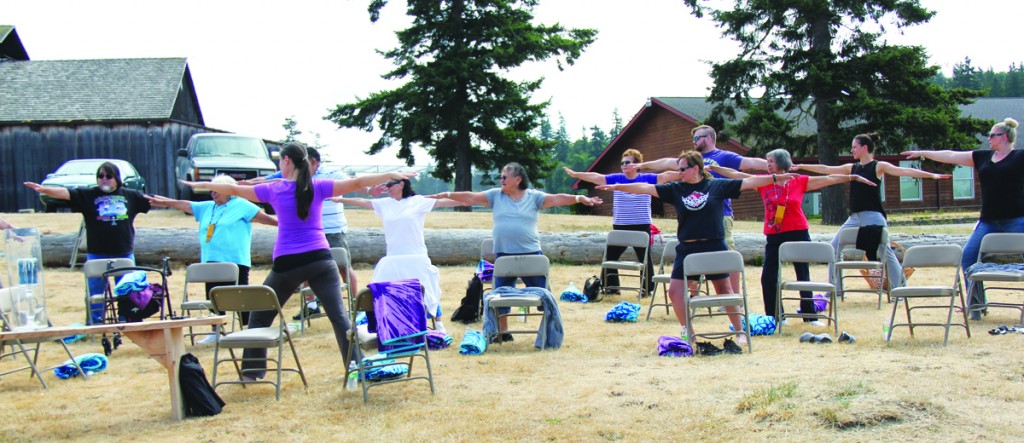
Chair yoga offers the ability to improve your health through an amazing form of adaptive exercise. You are supported by a chair, so you can receive yoga’s healing and restorative benefits that have been known for thousands of years. Yoga relaxes your body and mind, improves your musculoskeletal fitness and flexibility, and elevates your overall health and well-being. The Wisdom Warrior chair yoga participants were full-on recipients of the mind and body relaxation benefits.
“This was the most perfect setting for relaxing that I’ve felt in a long time,” said Mabel Norris, a Haida tribal member elder from Hydaburg, Alaska who is a regular at the Wisdom Warrior events. “The thing is I find that my balance isn’t quite as strong as it once was, but I was pleasantly surprised I had some and was able do the stretches.”
You are invited to join Wisdom Warriors and start your path to better health, with the support of your community. Class locations can vary. Please call 360-716-5642 or go to the Tulalip Health Clinic for more information.
Contact Micheal Rios, mrios@tulaliptribes-nsn.gov


